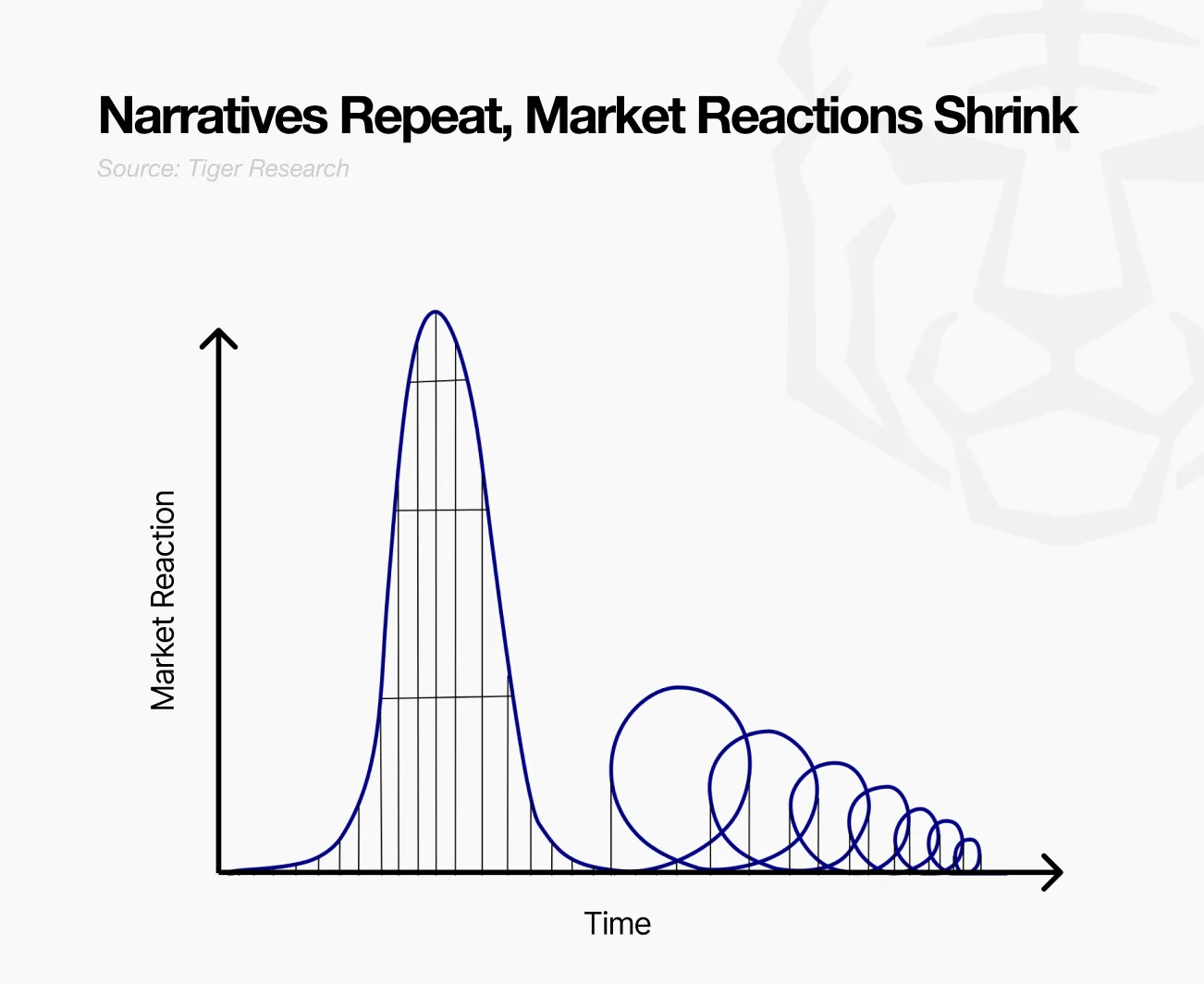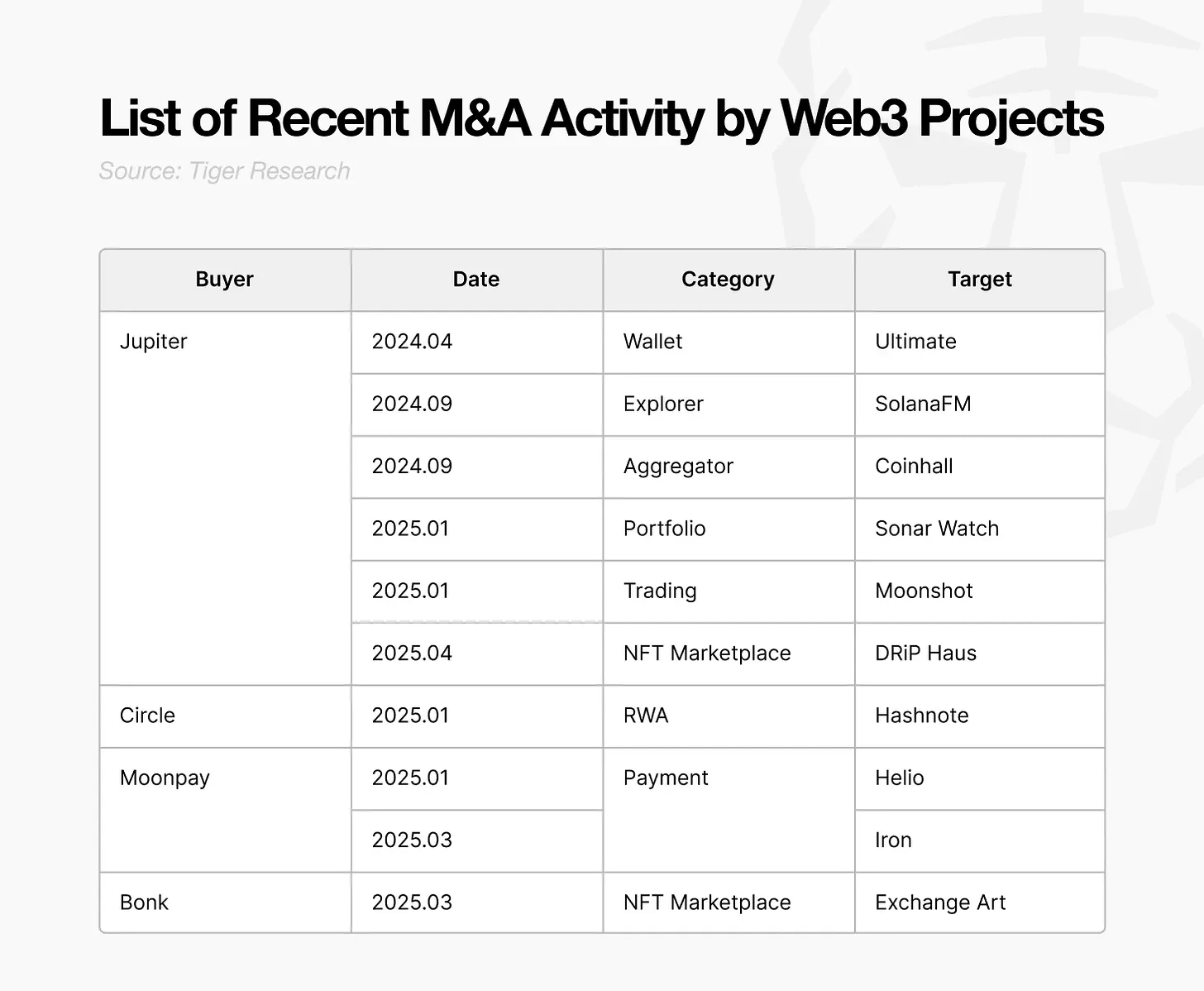Key Summary
The Web3 industry is shifting from philosophical ideals to corporate operations, with a focus on actual profitability and structured operations.
The deepening awareness of market participants, clearer regulations, and the acceleration of traditional financial capital have expedited this transition. Web3 projects now need to be evaluated based on business outcomes rather than ideology.
Corporatization is achieved through vertical integration mergers and institutional IPOs. Web3 is breaking through the experimental exploration phase and moving towards mainstream institutional standards.
I. Web3 Industry: From Ideology to Business Practicality
The Web3 industry is at a critical turning point. Its value assessment system has transcended the realms of philosophy and idealism, transitioning towards a business-oriented industry. In the past, "decentralization" was the core ideological value, far outweighing commercial considerations. Even projects lacking immediate profit models could gain recognition based on potential, reinforced by the speculative frenzy in the cryptocurrency market.
Recent developments indicate a fundamental shift: projects are beginning to build substantial profit models and accept evaluations based on business performance. Some projects have generated considerable revenue and gained market recognition, marking a transition in the Web3 industry from philosophical values to practical outcome assessment.
This report analyzes this structural change and explores new directions for the Web3 industry.
II. Changing the Rules of the Game
The rules of the Web3 industry are being restructured. The industry's focus is shifting from narrative-driven to effectiveness-first, marking its maturation process. Three core elements are driving this transformation: the deepening awareness of market participants, the improvement of regulatory frameworks in various countries accelerating the institutional integration of Web3, and the accelerated influx of traditional financial capital. These developments establish stricter industry standards.

Despite the market maturing, Web3 still responds to strong narratives. The industry remains fundamentally a participant-driven attention economy, where narratives form consensus through collective emotional resonance, ultimately reflected in market capitalization. Specific keywords or narratives can still attract attention and drive price surges.
However, market participants are now highly familiar with this model, diminishing the effectiveness of narrative responses. Price increases driven solely by expectations are difficult to sustain, with growth rates significantly narrowing compared to previous cycles, highlighting the limitations of the narrative-driven model.
Institutional integration and traditional financial capital have accelerated this transformation. Regulatory frameworks reduce project uncertainty while demanding higher transparency and accountability standards. Projects must demonstrate real business structures and operational performance; mere vision is no longer sufficient. Traditional financial capital also evaluates based on quantifiable metrics such as profitability, growth rates, and financial strength, rather than short-term market reactions. The assessment standards for Web3 have shifted from philosophical ideals to business fundamentals, fundamentally changing the rules of the game.
III. Web3 Industry: From the Age of Exploration to Corporatization
The Web3 industry is undergoing a fundamental transformation in structure and strategy. Projects are not only focusing on product-market fit but also emphasizing sustainable profit models and stable cash flows, traditional business metrics. To achieve these goals, projects are evolving towards organized corporate structures through traditional means such as IPOs and strategic mergers.
3.1 The Background and Necessity of Corporatization

Stablecoin Market Capitalization Trends Data Source: rwa.xyz
Early Web3 was akin to an experimental ecosystem centered around small teams, maintaining the agility of startups. However, as the industry has developed, the importance of structured operations has become increasingly prominent. This is similar to the rise of commercial companies during the Age of Exploration: individual explorers initially relied on royal sponsorship for voyages, and as trade routes opened and scales expanded, systematic management of risks and capital gave rise to commercial organizations. The corporatization transformation of Web3 follows the same logic.
3.2 Accelerating Growth Through Corporate Expansion Strategies
The corporatization of Web3 is not just about organizational expansion; it is also about deepening business expansion and connections with institutional capital, primarily presenting in two directions: achieving ecological synergy through vertical integration and integrating into institutional systems through IPOs.

Aggressive mergers and acquisitions achieve vertical integration, which is essentially an inevitable choice under industry maturation and intensified competition. Companies need to unify user experiences and create service synergies to capture market share. Jupiter integrates Solana's ecological trading functions through acquisitions of Meme coin trading app Moonshot, NFT marketplace DRiP Haus, and crypto portfolio service SonarWatch; crypto payment company Moonpay acquires Solana payment app Helio; stablecoin issuer Circle acquires Hashnote. These vertical integrations signify an important paradigm shift in the Web3 industry.
While such integrations superficially resemble traditional corporate growth strategies, they fundamentally reflect a significant shift in Web3's core principles. The early core values of Web3—decentralization and community governance—are being adjusted for efficiency and economies of scale, showing that projects prioritize market competitiveness and sustainability over ideological values.
On the other hand, companies are actively seeking institutional integration through IPOs. Circle disclosed details of USDC reserve management to enhance transparency during its IPO process; Coinbase became the first Web3 company to adopt accounting standards and disclosure systems by listing on Nasdaq. These institutional initiatives indicate that Web3 projects are evolving from technical experiments to stable corporate structures, establishing a foundation to address regulatory uncertainties by adopting traditional capital market norms, gaining the trust of institutional investors, and reaching broader markets.
IV. Conclusion
The Web3 industry has officially entered the era of corporatization, with projects reorganizing around structured operations and quantifiable business outcomes, moving beyond the phase of defining value based on potential and philosophical ideals.
Institutional integration is driving the transformation process, with stakeholders demanding structural sustainability rather than mere technical experiments. Projects must explore the practical utility of decentralization and translate it into real business opportunities.
This transformation is not a temporary phenomenon but a necessary step to bridge the gap between idealism and long-term sustainability. Corporatization is not a departure from the original vision but rather reinforces elements often overlooked in early narratives: investor protection, operational accountability, and a trust-based market system.
The Age of Exploration revealed new frontiers, and now corporatized Web3 projects are laying the groundwork for broader market expansion based on these discoveries. The developments in this stage will determine the future direction of the industry and are worth close attention.
免责声明:本文章仅代表作者个人观点,不代表本平台的立场和观点。本文章仅供信息分享,不构成对任何人的任何投资建议。用户与作者之间的任何争议,与本平台无关。如网页中刊载的文章或图片涉及侵权,请提供相关的权利证明和身份证明发送邮件到support@aicoin.com,本平台相关工作人员将会进行核查。



